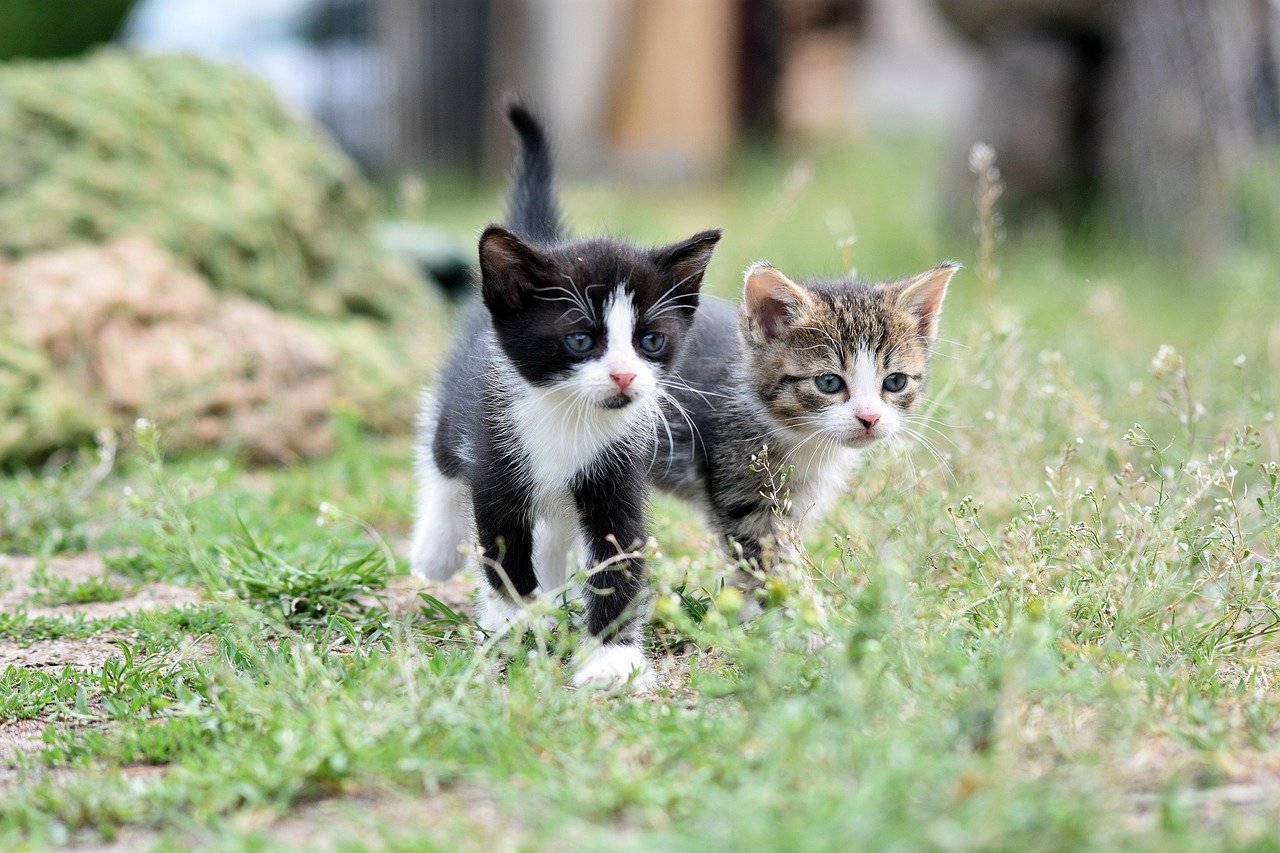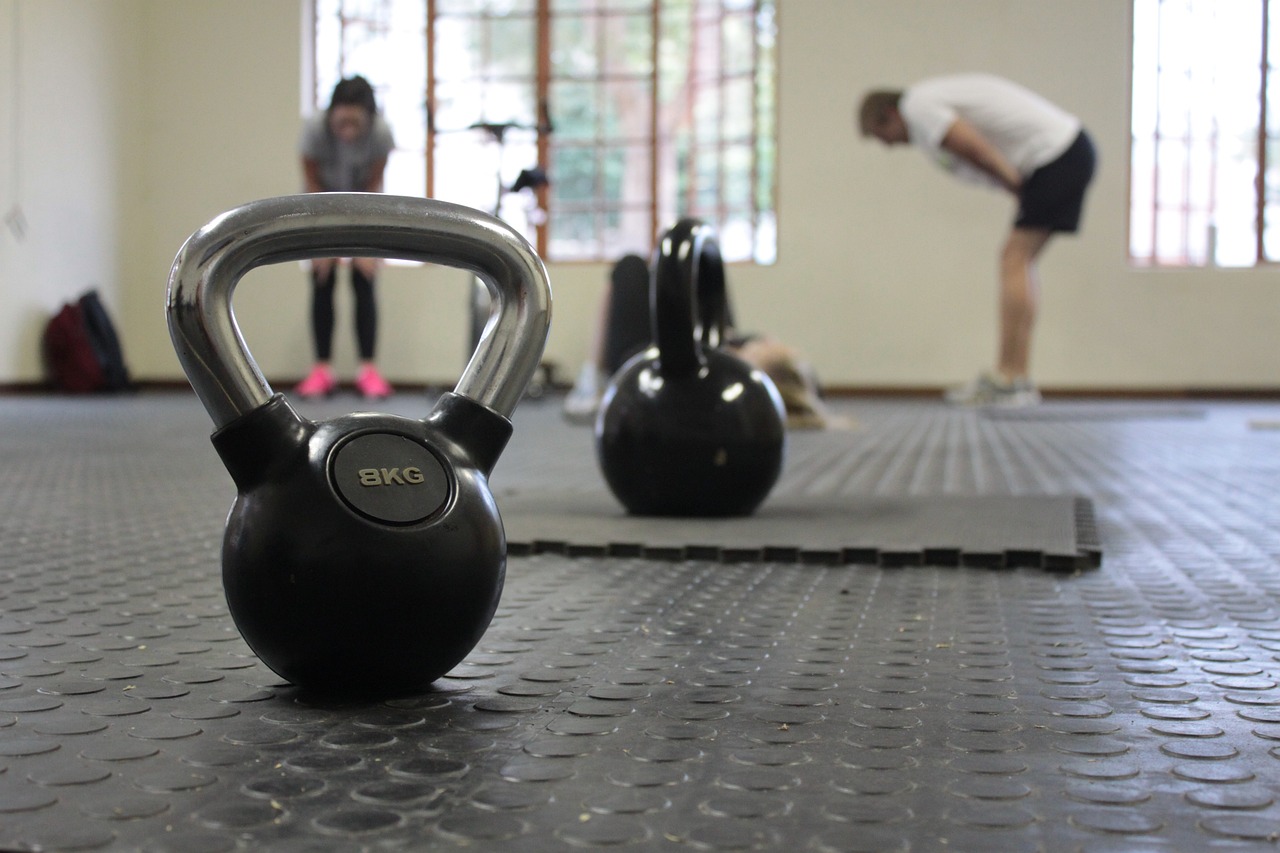The Benefits of Regular Physical Activity for Pets
As pet owners, we often find ourselves wrapped up in the adorable antics of our furry friends. But have you ever stopped to think about the profound impact that regular physical activity can have on their lives? Just like humans, pets thrive on movement and engagement. Exercise is not just a way to burn off that extra energy; it’s a cornerstone of their health and happiness. In this article, we’ll explore the myriad benefits of keeping our pets active, from improved physical health to enhanced mental well-being, and everything in between. So, grab a leash, and let’s dive into the world of pet fitness!
One of the most significant advantages of regular exercise for pets is the improvement in their physical health. Just think about it: a well-exercised pet is less likely to suffer from obesity, which can lead to a host of health issues, including diabetes, joint problems, and heart disease. Regular activity helps maintain a healthy weight, strengthens muscles, and supports cardiovascular health. For instance, a daily walk can do wonders for your dog’s heart and lungs, while also keeping their joints flexible. It’s essential to understand that a pet's physical health is closely linked to their activity level, making it crucial to incorporate exercise into their daily routine. Not only does it prevent obesity, but it also promotes longevity and vitality, giving your pets the energy to enjoy life to the fullest.
Just as physical health is vital, so too is mental stimulation. Pets, especially dogs and cats, can experience anxiety and boredom just like humans. Engaging them in physical activities is a fantastic way to combat these issues. Exercise reduces anxiety levels, alleviates boredom, and prevents behavioral problems that stem from pent-up energy. Imagine your pet as a pressure cooker; without an outlet for that steam, they can become explosive! Regular exercise allows them to release that energy in a positive way, leading to happier and more balanced pets. Whether it’s a game of fetch, a brisk jog, or a playful romp in the backyard, these activities not only stimulate their bodies but also their minds, ensuring they remain sharp and engaged.
Engaging in physical activities also opens up a world of socialization opportunities for pets. When pets interact with other animals and people, they learn essential social skills that contribute to their overall well-being. Regular exercise sessions at the park or during group walks can significantly enhance their confidence and reduce fearfulness. Imagine your shy dog meeting new friends at the dog park; the joy of social interaction can transform their behavior! This socialization is crucial, especially for younger pets, as it helps them develop a well-rounded personality.
Participating in group activities, such as dog parks or community walks, provides pets with valuable social experiences. These interactions not only foster friendships among pets but also create a sense of community among their owners. Think of it as a playdate for your furry friend, where they can run, play, and explore in a safe environment. It’s a win-win situation: your pet gets to socialize, and you get to meet fellow pet lovers!
Organizing playdates or training sessions can further enhance your pet’s social skills and obedience. These interactions contribute to a pet's overall social development and mental health. Just like humans, pets learn through interaction and practice. Whether it’s learning new tricks or simply playing with other pets, these activities stimulate their minds and bodies, encouraging positive behaviors and reducing anxiety.
Let’s not forget the emotional benefits of regular physical activity. Engaging in exercise with your pet strengthens the bond between you two. Shared activities, whether it’s a long hike or a simple game of tug-of-war, foster trust and companionship. It’s those little moments of joy and connection that create a lasting relationship with your furry friend. After all, pets are not just animals; they are family members who thrive on love and attention.
Exercise can lead to significant behavioral changes in pets. Regular activity can reduce destructive behaviors and improve overall temperament. When pets are physically and mentally stimulated, they are less likely to engage in unwanted behaviors like chewing furniture or excessive barking. Think of it as a natural way to channel their energy into something productive.
Physical activity can also help alleviate aggression in pets. When pets have excess energy, they may become irritable or aggressive. By providing them with ample opportunities to exercise, you can help them channel that energy into more positive behaviors. For example, a vigorous game of fetch can transform a hyperactive pup into a calm companion.
Lastly, regular exercise can mitigate separation anxiety in pets. When pets are physically tired, they are more likely to relax when left alone. Strategies for keeping pets active, such as morning jogs or interactive play sessions, can promote a more relaxed demeanor when you leave the house. It’s all about setting them up for success!
- How much exercise does my pet need?
It depends on the breed and age of your pet. Generally, dogs should get at least 30 minutes to 2 hours of exercise daily, while cats also benefit from interactive play sessions. - Can I over-exercise my pet?
Yes, over-exercising can lead to fatigue or injury. Always monitor your pet and adjust their activity level based on their age, health, and breed. - What are some fun activities I can do with my pet?
Consider hiking, agility training, fetch, swimming, or even dog yoga! The options are endless and can be tailored to your pet's preferences.

Improved Physical Health
When it comes to our beloved pets, their health is paramount. Just like us, they need regular exercise to stay fit and vibrant. Engaging in physical activity is essential for maintaining a healthy weight, which is crucial in preventing obesity—a condition that can lead to a myriad of health issues. Imagine your pet as a well-tuned engine; without regular maintenance, it can sputter and stall. In this case, exercise acts as the oil that keeps everything running smoothly.
Moreover, regular exercise strengthens your pet's muscles and supports their cardiovascular health. Think of their heart as a pump that needs to be exercised to keep it strong and efficient. Just as we benefit from a good workout, pets experience similar advantages. Whether it’s a brisk walk, a game of fetch, or a playful romp in the yard, these activities not only help in burning off excess calories but also contribute to stronger muscles and better overall health.
In fact, studies show that pets that engage in regular physical activities tend to have lower risks of developing chronic conditions such as diabetes, arthritis, and heart disease. To put it simply, keeping your furry friend active is like investing in their future health. Here’s a quick overview of the benefits:
| Benefit | Description |
|---|---|
| Weight Management | Helps maintain a healthy weight, reducing the risk of obesity-related diseases. |
| Muscle Strength | Builds and maintains muscle mass, promoting agility and mobility. |
| Cardiovascular Health | Improves heart function and circulation, leading to a longer, healthier life. |
Additionally, regular physical activity can enhance your pet's immune system, making them less susceptible to illnesses. Just like a well-balanced diet, exercise is a critical component of a healthy lifestyle. If you think about it, a pet that is physically active is not only happier but also healthier, which translates to fewer vet visits and a longer, more fulfilling life.
So, if you want to see your pet thrive, it’s time to get moving! Incorporate fun activities into your daily routine. Whether it’s a leisurely stroll in the park or an energetic game of tug-of-war at home, the key is to make it enjoyable for both you and your furry friend. After all, a happy pet is a healthy pet!

Enhanced Mental Well-being
When it comes to our furry friends, their mental health is just as crucial as their physical health. Think about it: just like humans, pets can experience stress, anxiety, and boredom. Regular physical activity plays a pivotal role in keeping their minds sharp and their spirits high. Engaging in exercise not only provides a physical outlet for pent-up energy but also serves as a fantastic way to stimulate their brains. Activities like chasing a ball or navigating an obstacle course can be incredibly invigorating for pets, transforming their mood and overall demeanor.
Moreover, exercise can significantly reduce behavioral problems that stem from anxiety and boredom. When pets are active, they are less likely to engage in destructive behaviors, such as chewing on furniture or excessive barking. Instead, they channel their energy into positive activities, leading to a more harmonious home environment. Just imagine how much happier you and your pet will be when they’re not tearing up the couch out of sheer boredom!
Another fascinating aspect of physical activity is its ability to foster social interactions. Whether it's a romp in the park or a game of tug-of-war with a friend, these activities provide pets with valuable opportunities to socialize. This not only helps them learn how to interact with other animals but also boosts their confidence. A well-socialized pet is generally more balanced and less fearful in new situations. They become the life of the party, ready to make friends with both humans and other pets alike.
Engaging in physical activities allows pets to interact with other animals and people. These socialization opportunities are vital for developing a pet's confidence and reducing fearfulness. For example, a shy dog that regularly visits a dog park is likely to become more comfortable around other dogs and people over time. The more they engage in these social settings, the more they learn about body language and appropriate behavior, leading to a well-adjusted pet.
Participating in group walks or visiting dog parks provides pets with valuable social experiences. These group activities not only keep pets physically active but also allow them to form friendships with other animals. Just like humans, pets thrive on social interaction, and these experiences can greatly enhance their mental well-being. Imagine your dog bounding around with newfound friends, tails wagging and tongues lolling in joy—it's a sight that warms any pet owner's heart!
Organizing playdates or training sessions can further enhance social skills and obedience. These interactions contribute to a pet's overall social development and mental health. For instance, a training session with other dogs can help your pet learn to follow commands while also interacting with their peers. It’s a win-win situation! Not only are they getting exercise, but they’re also sharpening their minds and learning valuable life skills.
In summary, regular exercise is a cornerstone for maintaining a pet's mental well-being. It reduces anxiety, combats boredom, and enhances social skills, leading to a happier, more balanced companion. So, let’s get moving! Your pet’s mental health is worth every step.
Q: How much exercise does my pet need daily?
A: The amount of exercise varies by breed, age, and health. Generally, dogs require at least 30 minutes to 2 hours of exercise daily, while cats benefit from shorter play sessions throughout the day.
Q: What are some fun activities I can do with my pet?
A: You can take your dog for a hike, play fetch, or enroll them in agility classes. For cats, consider interactive toys or laser pointers to keep them moving!
Q: Can exercise really help with my pet's anxiety?
A: Absolutely! Regular physical activity can reduce anxiety and stress levels in pets, leading to a calmer and more relaxed demeanor.
Q: How do I know if my pet is getting enough exercise?
A: If your pet is maintaining a healthy weight, displaying good behavior, and seems happy and energetic, they are likely getting enough exercise. However, if they are destructive or overly anxious, it may be time to increase their activity level.
Socialization Opportunities
When it comes to our beloved pets, socialization is just as important as physical exercise. Engaging in physical activities provides a golden opportunity for pets to interact with other animals and people, which can significantly boost their confidence and reduce fearfulness. Imagine your shy pup, who usually hides behind your legs, suddenly making friends at the dog park. It’s like watching a caterpillar transform into a butterfly! Regular exercise not only helps them burn off energy but also exposes them to new experiences that are vital for their emotional development.
Participating in group activities such as community walks, dog training classes, or even just hanging out at the local dog park can be immensely beneficial. These settings allow pets to learn how to communicate with others, understand social cues, and develop essential skills. For example, a dog that regularly interacts with other dogs will learn how to play nicely, share space, and even take turns. This can lead to a more balanced and well-adjusted pet, reducing the likelihood of behavioral issues down the line.
Moreover, socialization through physical activity can help pets become more adaptable. Whether it's encountering new environments, meeting different people, or interacting with various animals, these experiences can prepare them for the unexpected. Just like humans, pets thrive on routine but also need to be flexible. Engaging in social activities can teach them how to cope with change, making them less anxious and more resilient.
Here are some great ways to enhance your pet's socialization opportunities:
- Group Activities: Join a local pet club or participate in group training sessions. These activities not only provide exercise but also encourage interaction with other pets and their owners.
- Playdates: Organize playdates with friends who have pets. This can provide a safe environment for your pet to learn and play.
- Dog Parks: Regular visits to dog parks allow your pet to meet a variety of dogs, helping them to develop their social skills.
In conclusion, the socialization opportunities that arise from regular physical activity are invaluable. They not only contribute to a pet's physical health but also play a crucial role in their emotional and social development. So, the next time you lace up your sneakers for a walk, remember that you’re not just exercising your pet; you’re also helping them grow into a confident and well-rounded companion.
Q: How often should I socialize my pet?
A: It's beneficial to socialize your pet regularly. Aim for at least a few times a week, but daily interactions can be even more advantageous.
Q: What if my pet is shy or aggressive?
A: Start slowly and choose low-stress environments for socialization. Gradually introduce your pet to new experiences, and consider consulting a professional trainer if you have concerns.
Q: Can socialization help with behavioral issues?
A: Absolutely! Regular socialization can reduce anxiety, fearfulness, and aggression, leading to a happier and more balanced pet.
Group Activities
When it comes to keeping our furry friends happy and healthy, play a pivotal role. Imagine a bustling dog park filled with wagging tails and playful barks; it's not just a playground—it's a social hub! Engaging in group activities allows pets to interact with other animals and people, which is essential for their development and emotional well-being. Just like humans thrive on social connections, pets benefit immensely from these interactions. They learn to communicate, establish friendships, and even develop their social skills in a fun and stimulating environment.
One of the most significant advantages of group activities is the opportunity for socialization. When pets participate in group walks or playdates, they encounter different breeds, sizes, and temperaments. This exposure helps them become more adaptable and confident. Imagine a shy dog who, after a few visits to the dog park, transforms into a playful social butterfly! Such experiences can significantly reduce fearfulness and anxiety, making pets more well-rounded companions.
Moreover, engaging in group activities isn't just beneficial for pets; it also enhances the experience for their owners. Picture yourself chatting with fellow pet parents while your dogs frolic together—it's a win-win situation! Group activities foster a sense of community among pet owners, allowing them to share tips, advice, and even form lasting friendships. It's like a support group, but for pet lovers!
To illustrate the benefits further, let's look at some popular group activities that can enrich your pet's life:
- Group Walks: These are great for exercise and socialization. Walking in a group allows pets to explore new areas while interacting with other dogs and their owners.
- Dog Parks: A safe space where pets can run free and play. Regular visits to dog parks can help reduce behavioral issues by providing an outlet for energy and mental stimulation.
- Training Classes: Group training sessions are fantastic for improving obedience and social skills. Plus, they offer a structured environment where pets can learn alongside their peers.
- Playdates: Arranging playdates with other pets can help your furry friend develop their social skills in a more controlled setting.
In summary, group activities are not just a fun way for pets to burn off energy; they are crucial for their social development and emotional health. By participating in these activities, pets can improve their confidence, reduce anxiety, and build meaningful relationships with both humans and other animals. So, why not grab a leash and head to your local dog park? You’ll be surprised by how much joy and enrichment these experiences can bring to your pet's life!
Q1: How often should I engage my pet in group activities?
A1: Aim for at least once a week to keep your pet socially active and mentally stimulated.
Q2: What should I do if my pet is shy around other animals?
A2: Start with smaller groups and gradually introduce your pet to new environments. Patience is key!
Q3: Are there specific breeds that benefit more from group activities?
A3: While all pets can benefit, social breeds like Labradors and Golden Retrievers often thrive in group settings.
Q4: How can I ensure my pet is safe during group activities?
A4: Always supervise your pet, choose appropriate venues, and ensure all pets are up-to-date on vaccinations.
Playdates and Training Sessions
When it comes to enriching your pet's life, are two of the most effective tools in your arsenal. Imagine your furry friend, tail wagging and eyes sparkling with joy, as they romp around with their pals or learn new tricks. These activities not only provide physical exercise but also stimulate their minds, making them happier and more balanced companions. Just like humans, pets thrive on social interactions, and what better way to facilitate that than through playdates?
Organizing playdates with other pets can be a game-changer. It’s like throwing a party for your pet where they can unleash their energy, chase after their friends, and engage in playful antics. During these interactions, pets learn valuable social skills, such as how to share, take turns, and recognize body language. This socialization is crucial for their development, especially for young pets. Training sessions, on the other hand, provide a structured environment where your pet can learn commands, tricks, and even some fun agility moves. Think of it as a school for your pet, where they can earn their 'degree' in obedience and good behavior!
Moreover, these activities can significantly improve the bond between you and your pet. When you engage in training sessions, you’re not just teaching them; you’re also communicating and building trust. It’s a two-way street! Pets that regularly participate in playdates and training sessions often exhibit better behavior overall. They tend to be less anxious and more confident, which can lead to a more harmonious household.
To maximize the benefits of playdates and training sessions, consider the following tips:
- Choose the right companions: Make sure your pet's playdate partner is friendly and well-socialized.
- Set clear boundaries: Supervise playdates to ensure that all pets are safe and having fun.
- Incorporate training into play: Use playtime as an opportunity to reinforce commands and good behavior.
- Be consistent: Regularly scheduled playdates and training sessions will yield the best results.
In conclusion, playdates and training sessions are not just about having fun; they are essential for your pet's emotional and social development. So, why not grab a leash, invite a friend over, and watch your pet thrive in a world filled with joy and learning? You’ll be amazed at the positive changes you’ll see in their behavior and overall happiness!
1. How often should I schedule playdates for my pet?
It's generally recommended to arrange playdates once a week, but the frequency can vary based on your pet's personality and energy levels.
2. What should I do if my pet doesn't get along with other animals?
If your pet shows signs of aggression or fear around other animals, it might be best to consult a professional trainer before introducing them to playdates.
3. Can I combine playdates with training sessions?
Absolutely! Mixing training with play can make learning more enjoyable for your pet while reinforcing good behavior in a fun setting.
4. How long should a training session last?
Training sessions should be short and engaging, typically lasting around 5 to 15 minutes, depending on your pet's attention span.
5. What are some good training activities for pets?
Basic commands, agility exercises, and even scent work are excellent training activities that can be incorporated into playdates.
Bonding with Owners
When it comes to our furry friends, nothing quite compares to the joy of spending quality time together. Regular physical activity is not just about keeping your pet fit; it’s also a fantastic way to strengthen the bond between you and your beloved companion. Think of it as a shared adventure, where both of you get to explore the great outdoors, enjoy the fresh air, and create lasting memories. Whether it's a brisk walk in the park, a spirited game of fetch, or a leisurely hike, these moments build trust and deepen the emotional connection you share.
Engaging in physical activities together allows you to communicate in ways that words simply can't express. Your pet learns to read your body language, and you become attuned to their needs and feelings. This mutual understanding fosters a sense of security and belonging. Imagine how rewarding it feels when your dog eagerly wags its tail upon seeing you grab the leash, or how your cat purrs contentedly as you engage in a playful session with a feather toy. These interactions are not just play; they are vital components of a healthy relationship.
Moreover, regular exercise can help establish a routine, which is essential for many pets. Routines create a sense of stability and predictability in their lives. When your pet knows that every evening means a walk in the neighborhood, it enhances their overall well-being. This structure not only aids in their physical health but also contributes to their mental stability, making them feel more secure in their environment.
Additionally, activities like training sessions or agility courses can be incredibly beneficial. These sessions not only provide physical exercise but also stimulate your pet's mind. As you work together to learn new tricks or navigate an obstacle course, you reinforce your bond and build a partnership based on teamwork. It’s a win-win situation where your pet gets to exercise both their body and mind, while you enjoy the satisfaction of watching them grow and learn.
In conclusion, the benefits of bonding through physical activity are immense. Not only does it keep your pet healthy and happy, but it also enriches your relationship, creating a deeper connection that can last a lifetime. So grab that leash, put on your running shoes, or roll out that yoga mat, and get ready for some quality time with your furry friend!
- How much exercise does my pet need? The amount of exercise varies by breed, age, and health. Generally, dogs require at least 30 minutes to 2 hours of activity daily, while cats benefit from shorter, more intense play sessions.
- What are some fun activities to do with my pet? Activities can include walks, runs, fetch, swimming, agility training, and even interactive toys that stimulate their minds.
- Can exercise help with my pet's behavioral issues? Yes! Regular physical activity can reduce anxiety, aggression, and other behavioral problems by channeling excess energy.
- How can I tell if my pet is getting enough exercise? Signs include a healthy weight, good muscle tone, and a generally happy demeanor. If your pet is restless or destructive, they may need more activity.

Behavioral Improvements
When it comes to our furry friends, their behavior can sometimes leave us scratching our heads. You might have noticed that your pet can be a little too energetic, anxious, or even aggressive at times. But here’s the good news: regular physical activity can work wonders in transforming these behaviors! Just like humans, pets need an outlet for their energy, and exercise serves as the perfect channel. Think of it as a pressure valve; when it’s released, everything seems to calm down. By engaging your pet in consistent physical activities, you're not just helping them stay fit; you're also paving the way for a more harmonious home environment.
For instance, have you ever come home to find your living room turned into a disaster zone? Shoes chewed, cushions shredded—it's a scene straight out of a pet parent’s nightmare! This destructive behavior often stems from boredom or pent-up energy. By incorporating regular exercise into your pet's routine, you can significantly reduce these tendencies. A tired pet is generally a well-behaved pet, and that’s a win-win for everyone involved. Additionally, physical activity stimulates the release of endorphins, which are like nature's mood elevators. This not only helps in reducing anxiety but also promotes a sense of calm, leading to a more balanced demeanor.
Moreover, let’s dive deeper into the specifics of how physical activity can lead to behavioral improvements. For instance, when pets engage in structured exercise, such as agility training or fetch games, they learn to focus their energy in positive ways. This training not only fosters discipline but also enhances their ability to follow commands. A well-exercised pet is more likely to respond to training cues, making it easier for owners to instill good behavior. In fact, here are some behavioral improvements you can expect from regular exercise:
- Reduced Destructive Behavior: Regular exercise helps alleviate boredom, leading to fewer incidents of chewing or digging.
- Improved Social Skills: Engaging in activities with other pets promotes better social interactions and reduces fearfulness.
- Calmer Temperament: Physical activity can help manage hyperactivity, leading to a more relaxed and manageable pet.
Another area where exercise shines is in managing aggression. Pets often display aggressive behaviors when they feel threatened or overwhelmed. By providing them with ample opportunities to expend their energy through play and exercise, you can help mitigate those aggressive tendencies. Imagine a dog that has just run around at the park, chasing after their favorite ball. They come home, panting but satisfied, and are far less likely to react aggressively to a new visitor or another pet. It's all about channeling that energy into something constructive!
Lastly, let’s talk about separation anxiety. Many pets struggle with being left alone, leading to a host of behavioral issues. By ensuring your pet gets plenty of exercise before you leave the house, you can help them feel more relaxed during your absence. Think of it this way: a well-exercised pet is less likely to feel anxious and is more inclined to settle down and nap while you’re away. This simple strategy can make a world of difference in their emotional well-being.
Q: How much exercise does my pet need?
A: The amount of exercise required varies by breed, age, and health. Generally, dogs need at least 30 minutes to 2 hours of exercise daily, while cats enjoy play sessions of about 15-30 minutes.
Q: What types of activities are best for my pet?
A: Activities can range from walks, runs, and fetch for dogs, to interactive play with toys for cats. Tailoring the activity to your pet’s preferences is key!
Q: Can exercise really change my pet’s behavior?
A: Absolutely! Regular physical activity can reduce destructive behaviors, anxiety, and aggression while improving overall temperament and social skills.
Reducing Aggression
When it comes to our beloved pets, aggression can be a serious concern. It’s not just about the occasional growl or bark; aggression can manifest in various forms, including biting, lunging, or even persistent barking. But here’s the good news: regular physical activity can be a game changer in reducing these aggressive tendencies. Just like humans, pets need an outlet for their energy, and when they don’t get enough exercise, that pent-up energy can lead to frustration and aggression. Think of it as a pressure cooker—if you don’t release the steam, it’s bound to explode!
Engaging our pets in regular exercise helps them channel their energy positively. For instance, a brisk walk or an exciting game of fetch can significantly reduce their stress levels and improve their mood. When pets are physically active, they are less likely to engage in aggressive behaviors because their bodies are busy releasing endorphins, which are natural mood lifters. It’s a win-win situation: your pet gets to burn off that excess energy, and you get to enjoy a calmer companion.
Moreover, exercise provides a fantastic opportunity for pets to socialize with other animals and people. This interaction is crucial, as it helps them learn appropriate behaviors in different situations. For example, a dog that regularly plays with other dogs is less likely to react aggressively when encountering unfamiliar pets. They learn to communicate and understand boundaries, which can drastically reduce fear-based aggression.
In addition to physical activity, it’s essential to incorporate training into your pet's routine. Training sessions combined with exercise can reinforce positive behaviors while providing mental stimulation. For example, you can teach your dog commands during a walk or incorporate agility exercises that challenge them both physically and mentally. It’s like multitasking for your furry friend!
Here’s a quick overview of how regular exercise can help reduce aggression:
| Benefit | Explanation |
|---|---|
| Energy Release | Exercise helps pets expend excess energy, reducing the likelihood of aggressive outbursts. |
| Mood Improvement | Physical activity releases endorphins, promoting a happier and calmer demeanor. |
| Social Skills | Regular interactions with other pets and people help teach appropriate behaviors and reduce fear. |
| Training Reinforcement | Combining exercise with training enhances learning and encourages positive behaviors. |
In conclusion, if you’re noticing aggressive tendencies in your pet, consider ramping up their physical activity. Not only will it improve their overall health, but it will also foster a more peaceful and enjoyable environment for both you and your furry friend. Remember, a tired pet is a happy pet!
- How much exercise does my pet need? The amount of exercise varies by breed, age, and health. Generally, dogs require at least 30 minutes to 2 hours of exercise daily, while cats benefit from shorter, more frequent play sessions.
- Can exercise help with my pet’s anxiety? Absolutely! Regular physical activity can significantly reduce anxiety levels in pets, making them more relaxed and less prone to aggressive behaviors.
- What types of activities are best for reducing aggression? Activities like walking, running, playing fetch, and engaging in dog parks are excellent for socialization and energy release.
- Is it ever too late to start exercising my pet? It’s never too late! Pets of all ages can benefit from regular exercise, but it’s essential to consult with a veterinarian before starting any new exercise program, especially for older or less active pets.
Managing Separation Anxiety
Separation anxiety is a common issue that many pets face, especially dogs. It's that heart-wrenching moment when you leave your furry friend at home, and you can almost hear the dramatic soundtrack playing in the background as they realize you're gone. But fear not! Regular physical activity can be a game-changer in managing this anxiety. Just like us, pets need a healthy outlet for their energy, and exercise is the perfect solution.
When pets engage in regular physical activity, it helps them burn off excess energy, which can significantly reduce feelings of anxiety. Think of it this way: if you've ever had a day packed with activities, you probably came home feeling exhausted yet fulfilled. The same goes for your pets! After a good romp in the park or a spirited game of fetch, they are less likely to fixate on your absence and more likely to chill on the couch.
Here are some effective strategies to incorporate physical activity into your pet's routine to help manage their separation anxiety:
- Daily Walks: Aim for at least 30 minutes of walking each day. This not only provides exercise but also exposes your pet to new sights, sounds, and smells, which can be mentally stimulating.
- Interactive Playtime: Engage in play sessions with toys that encourage your pet to run, jump, and chase. This can be as simple as tossing a ball or using a laser pointer for cats.
- Training Sessions: Incorporating short training sessions into your routine can be highly beneficial. Not only does it provide mental stimulation, but it also strengthens your bond.
- Doggy Daycare: If your schedule allows, consider enrolling your pet in a doggy daycare. This gives them the opportunity to socialize and play with other dogs, which can reduce their anxiety when left alone.
Moreover, establishing a consistent routine can greatly alleviate anxiety. Pets thrive on predictability, so by keeping a regular schedule for walks, meals, and playtime, you're helping them feel more secure. Just like how we feel better when we know what to expect, pets benefit from this structure too.
Lastly, remember that every pet is unique. What works for one might not work for another. It's essential to observe your pet's behavior and adjust their physical activity levels accordingly. If your pet continues to struggle with separation anxiety despite regular exercise, it might be worth consulting a veterinarian or a professional dog trainer for additional strategies tailored to your furry friend's needs.
- What are the signs of separation anxiety in pets? Look for signs like excessive barking, destructive behavior, or attempts to escape when you leave.
- How long should I exercise my pet each day? Aim for at least 30 minutes of exercise daily, but adjust based on your pet's age, breed, and energy level.
- Can I use toys to help with separation anxiety? Yes! Puzzle toys can keep your pet mentally stimulated while you're away.
Frequently Asked Questions
- How much exercise does my pet need?
The amount of exercise your pet needs can vary based on their age, breed, and health. Generally, dogs require at least 30 minutes to 2 hours of exercise daily, while cats may benefit from 15 to 30 minutes of playtime. Always consult your vet for personalized recommendations!
- What are some fun activities I can do with my pet?
There are plenty of engaging activities you can enjoy with your pet! Consider going for walks, playing fetch, engaging in agility training, or even swimming if your pet enjoys water. Don't forget about interactive toys that stimulate their minds while keeping them active.
- Can exercise help with my pet's behavioral issues?
Absolutely! Regular physical activity can significantly reduce destructive behaviors, anxiety, and even aggression in pets. By channeling their energy into exercise, you're likely to see a calmer and more balanced companion.
- How can I tell if my pet is getting enough exercise?
Signs that your pet is getting enough exercise include a healthy weight, good muscle tone, and a happy demeanor. If they seem restless, destructive, or overly hyper, it might be a sign they need more activity. Keep an eye on their behavior!
- Is it safe for my pet to exercise in hot weather?
While exercise is important, safety comes first! In hot weather, limit exercise to cooler parts of the day, like early morning or late evening. Always provide fresh water and watch for signs of overheating, such as excessive panting or lethargy.
- What are some signs of over-exercising in pets?
Over-exercising can lead to fatigue, excessive panting, limping, or reluctance to continue playing. If you notice any of these signs, it's crucial to give your pet a break and consult your vet if symptoms persist.
- Can older pets benefit from regular exercise?
Definitely! Older pets can benefit immensely from regular, gentle exercise. It helps maintain their weight, keeps their joints flexible, and improves their overall mood. Just be sure to tailor the activities to their fitness level and consult your vet for guidance.



















